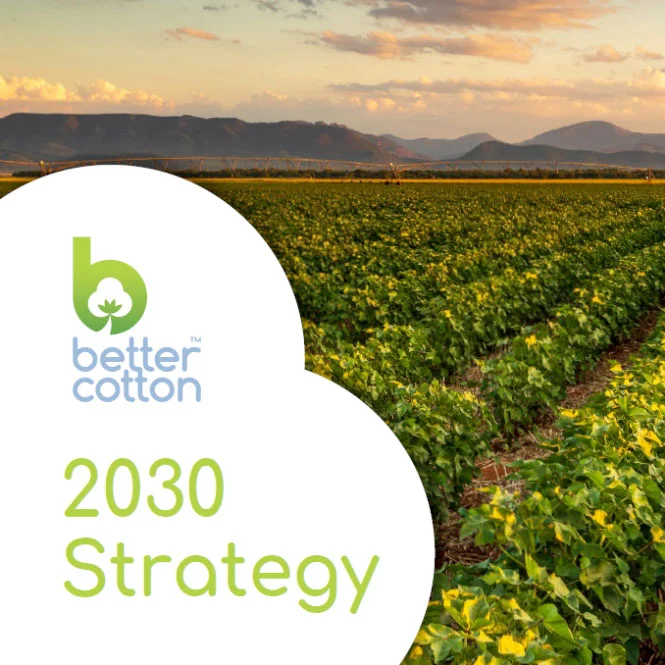- Who we are
- What we do
In just over 10 years we have become the world’s largest cotton sustainability programme. Our mission: to help cotton communities survive and thrive, while protecting and restoring the environment.
- Where we grow
Better Cotton is grown in 22 countries around the world and accounts for 22% of global cotton production. In the 2022-23 cotton season, 2.13 million licensed Better Cotton Farmers grew 5.47 million tonnes of Better Cotton.
- Our impact
- Membership
Today Better Cotton has more than 2,700 members, reflecting the breadth and diversity of the industry. Members of a global community that understands the mutual benefits of sustainable cotton farming. The moment you join, you become part of this too.
- Associate Membership
- Civil Society Membership
- Producer Organisation Membership
- Retailer and Brand Membership
- Supplier and Manufacturer Membership
- Find Members
- Member Monitoring
- Better Cotton Platform
- myBetterCotton
- Resources – Better Cotton Conference 2022
- Complaints
- Whistleblowing
- Safeguarding
- Get Involved in the Better Cotton Programme
- Thank you for contacting us
- Better Cotton’s Data Privacy Policy
- Log in
- Members’ Area
- Request for Proposals
- Better Cotton Cookie Policy
- Web Reference
- Measuring Cotton Consumption
- How to Implement the Chain of Custody Standard
- Resources – Better Cotton Conference 2023
- Certification Bodies Old
- Latest
- Sourcing
- Latest
The founding premise of Better Cotton is that a healthy sustainable future for cotton and the people that farm it is in the interests of everyone connected with it.
Let us help you find what you’re looking for
Results for {phrase} ({results_count} of {results_count_total})Displaying {results_count} results of {results_count_total}
By Lena Staafgard, Better Cotton, COO
Humanity has received its starkest warning yet on climate change, with the IPCC’s latest report confirming temperatures are likely to rise by more than 1.5°C, resulting in more widespread extreme weather, unless urgent action is taken.

All cotton-growing regions will be affected by climate risks, according to Cotton 2040, predominantly through heat stress, water stress and shortened growing seasons. Above all, smallholder farmers, who often lack access to the knowledge, resources and finance to protect or diversify their livelihoods, remain particularly vulnerable to the impacts of climate change.
BCI is already acting decisively to support the global push to reduce greenhouse gas emissions, achieve carbon neutrality, and ensure that smallholder farmers can continue cultivating the commodities we all consume every day. For us, this means helping cotton farmers and workers, especially smallholders, to build climate resilience.
We have built an in-depth understanding of Better Cotton’s carbon footprint to inform our upcoming global climate change strategy. Due to launch later this year, the strategy will cover the three areas that will help us deliver maximum benefit to farmers – reducing the climate impact of cotton farming, helping farmers to adapt their practices, and enabling a fair, inclusive transition.
But what does this mean in practice?
Building on our experience in developing and funding global programmes to reach cotton farmers at scale, we aim to leverage our convening power and global network to drive change across the cotton sector and beyond.
We’ll gather stakeholders worldwide to help encourage and grow financial schemes that create incentives for all cotton farmers to adopt more sustainable practices and compensate them in the event of climate disasters.
Importantly, we’ll work with our partners to better test, monitor and scale innovative climate-friendly practices. For example, we are supporting farmers to prioritise soil conservation by using practices such as cover cropping* or strip till – a technique that uses minimum tillage and only disturbs the portion of the soil that contains the seed row. Our partners are also working with farmers to use beneficial insects as an alternative to synthetic pesticides, and employ techniques such as short furrow irrigation, where water flows at a faster pace and is more evenly distributed, to use water resources more efficiently. Combined, these kinds of practices can help with both climate change adaptation and mitigation.
The Better Cotton Standard has always had a strong focus on soil health, but as we move forward, we will look to further promote principles of regenerative agriculture that enhance soil health by restoring organic carbon in the soil. Farming practices can play an important role in the soil’s ability to sequester carbon and provide the potential for it to become a ‘carbon sink.’ Keep an eye out for another blog post we will publish later this month on regenerative agriculture.
Understanding progress to drive impact
To create impact for the largest number of farmers possible, we need to understand how best to make progress. That’s why we’re collaborating with multiple partners to harmonise the way we measure sustainability risks and performance in cotton farming.
Together with other ISEAL sustainability standard members involved in the Gold Standard’s Climate Impact Project, we’re working to quantify carbon emission reductions linked to Better Cotton and other commodities in a way that corporate organisations can use and count towards their climate commitments. Our collective aim is to improve sustainability performance at a systemic level, helping to transform the way agricultural commodities are produced. For Better Cotton, we’ll define the best way to measure progress and develop clear guidance in line with the GHG Protocol and the Science-Based Targets Initiative. This entry into the carbon market will also help to increase the value of Better Cotton for farmers.
Through another collaborative project, the Delta Framework, we’re supporting the creation of a shared approach to measure and communicate sustainability progress for key commodities such as cotton and coffee. We have played an important role in identifying nine common social, environmental and economic goals, and developing 15 indicators, in line with the UN’s 2030 Sustainable Development Goals. This will include an indicator focusing on reducing GHG emissions by farming more sustainably. In particular, we have tested the Framework’s Cool Farm Tool in South Africa and India to understand how we can best use the results to drive progress.
For more information on how BCI is optimising sustainability data to drive impact, read more here.
To understand more about how BCI is taking action to fight climate change, visit our SDG hub here.
*A cover crop is a type of plant grown primarily to help suppress weeds, manage soil erosion, improve soil quality, and control diseases and pests.


